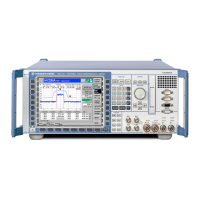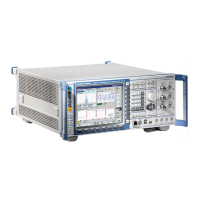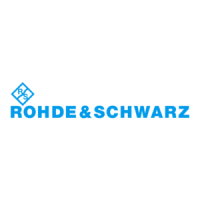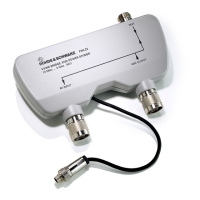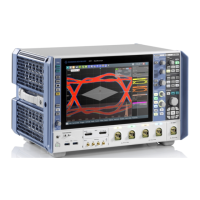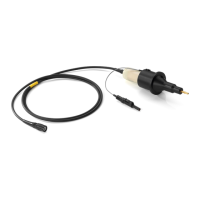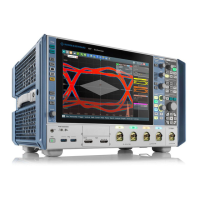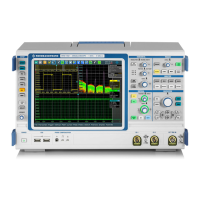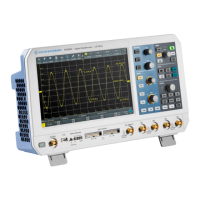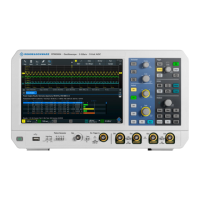CMU Structure and Syntax of Device Messages
1100.4903.12 5.11 E-8
DEF DEFault denotes a preset value. This value conforms to the default setting, as
it is called by the *RST command.
INF/NINF INFinity, Negative INFinity (NINF) represent the numerical values -9.9E37 or
9.9E37, respectively. INF and NINF are only sent as device responses.
NAN Not a Number (NAN) represents the value 9.91E37. NAN is only sent as de-
vice response. This value is not defined. Possible causes are division by zero,
subtraction or addition of infinite and the representation of missing values.
Boolean Parameters Boolean parameters represent two states. The ON state (logically true) is rep-
resented by ON or a numerical value unequal to 0. The OFF state (logically
untrue) is represented by OFF or the numerical value 0. ON or OFF is pro-
vided in a query.
Example: Setting command: SOURce:DM:CLOCk:STATe ON
Query: SOURce:DM:CLOCk:STATe?
Response: ON
Text Text parameters observe the syntactic rules for key words, i.e. they can be en-
tered using a short or long form. Like any parameter, they have to be separated
from the header by a white space. In the case of a query, the short form of the
text is provided.
Example: Setting command: TRIGger:SOURce EXTern
Query: TRIGger:SOURce? Response: EXT
Strings Strings must always be entered within quotation marks (' or ").
Example: :SYST:REM:ADDR:SEC 1,"GSM900MS_NSig" or
:SYST:REM:ADDR:SEC 1,’GSM900MS_Nsig’
Block data Block data are a transmission format which is suitable for the transmission of
large amounts of data. A command using a block data parameter with definite
length has the following structure:
Example: :HEADer:HEADer #45168xxxxxxxx
The double dagger # introduces the data block. The next number indicates how
many of the following digits describe the length of the data block. In the exam-
ple the 4 following digits indicate the length to be 5168 bytes. The data bytes
follow. During the transmission of these data bytes all End or other control signs
are ignored until all bytes are transmitted.
A #0 combination introduces a data block of indefinite length. The use of the in-
definite format requires a NL^END message to terminate the data block. This
format is useful when the length of the transmission is not known or if speed or
other considerations prevent segmentation of the data into blocks of definite
length.
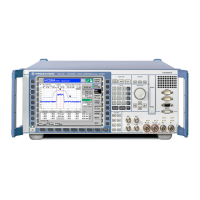
